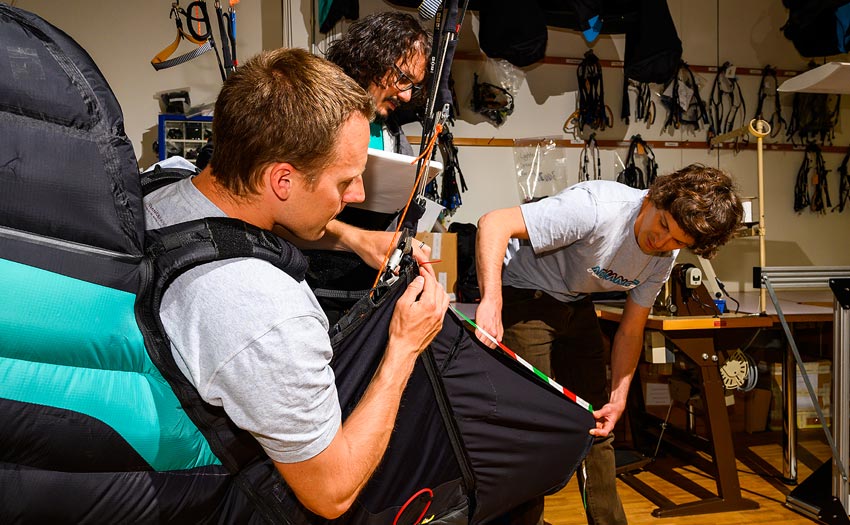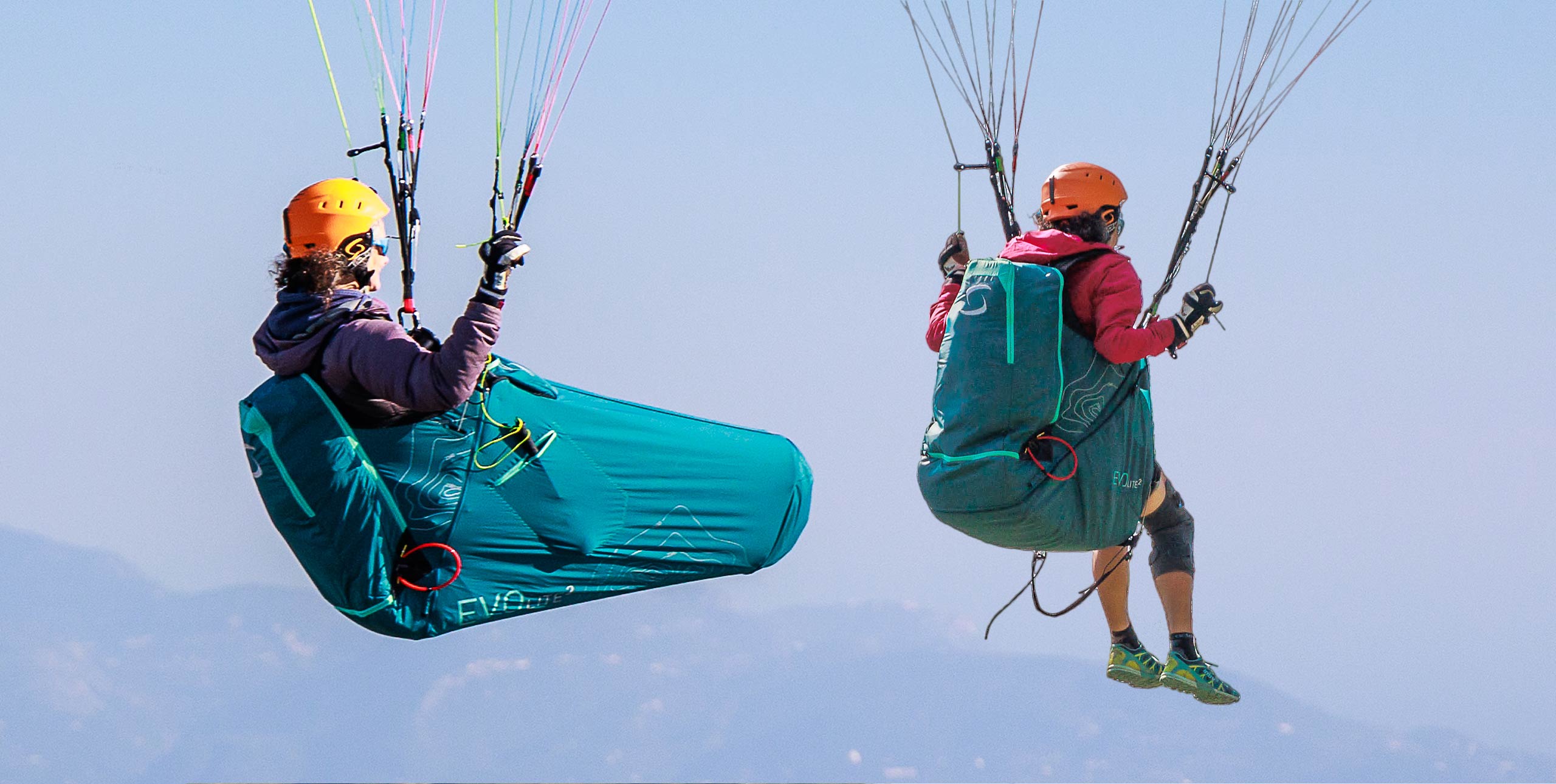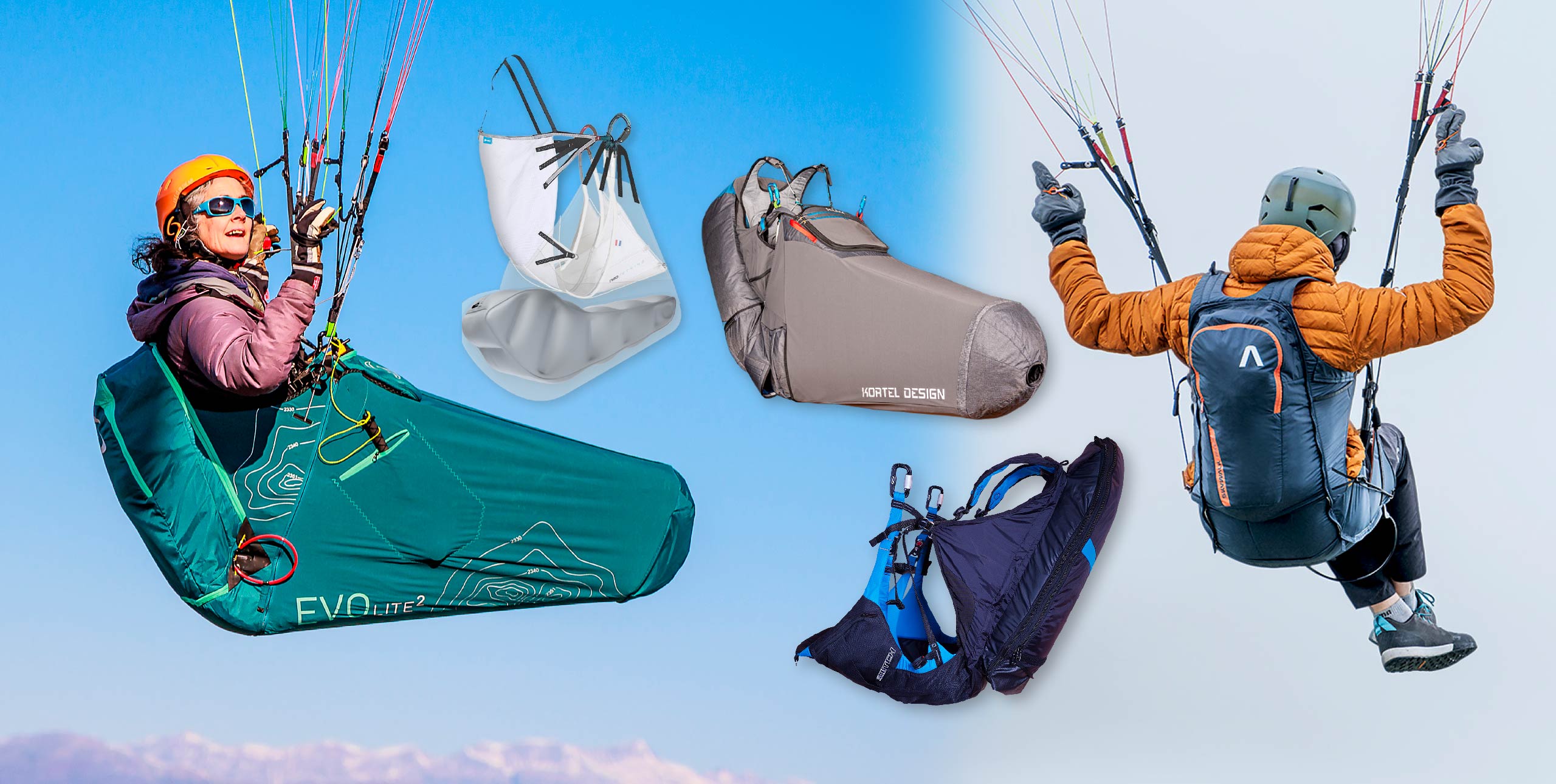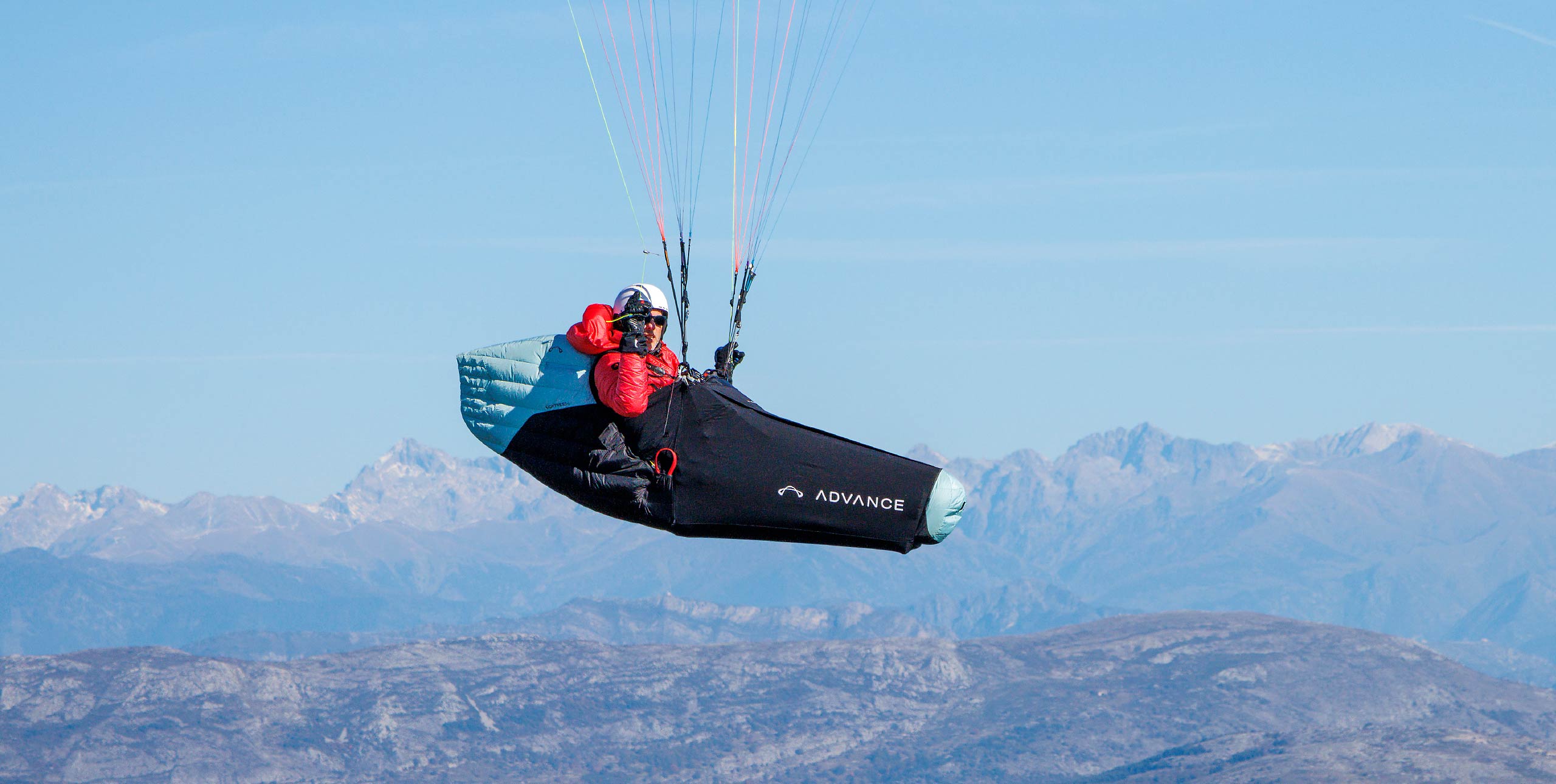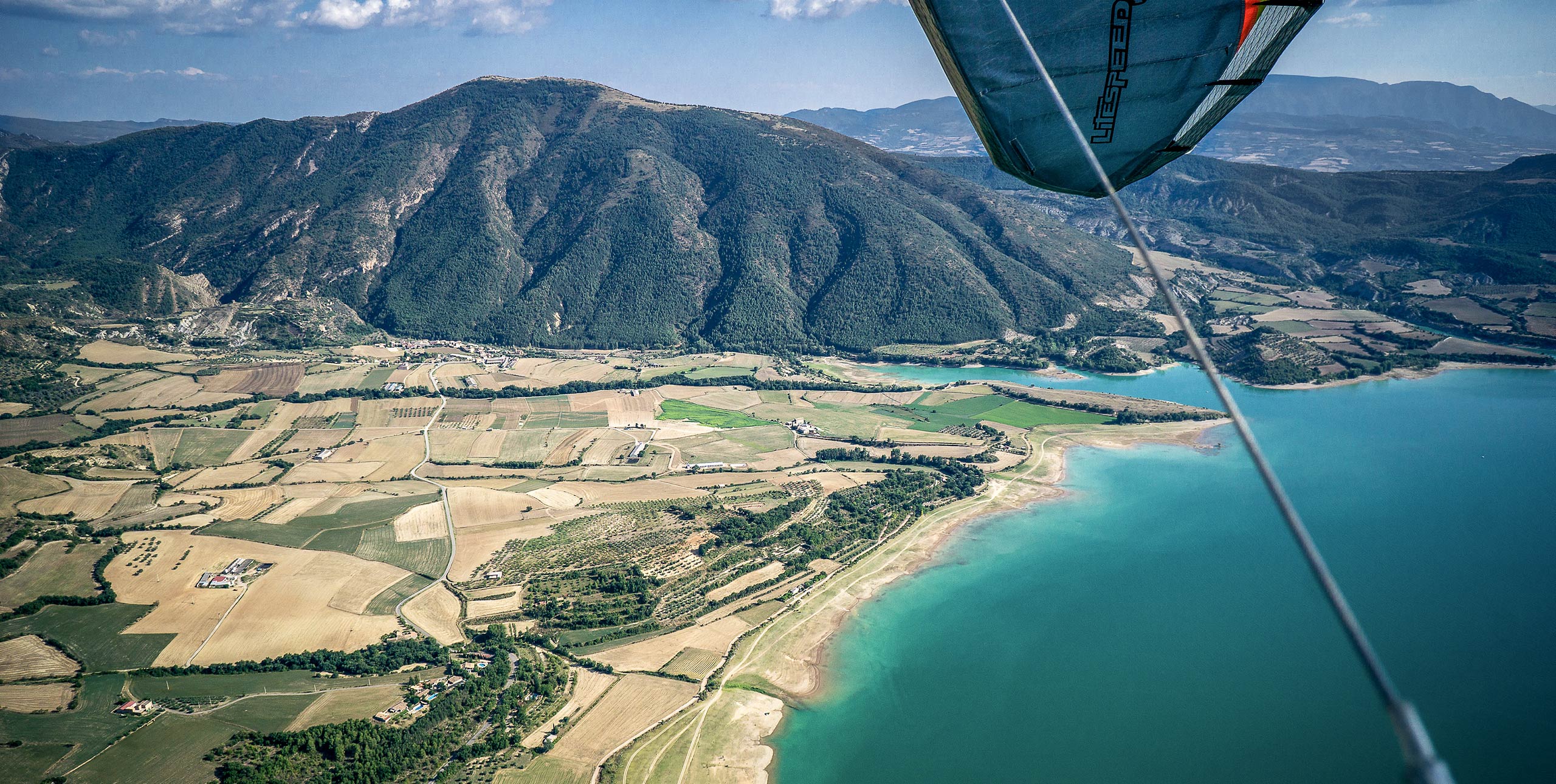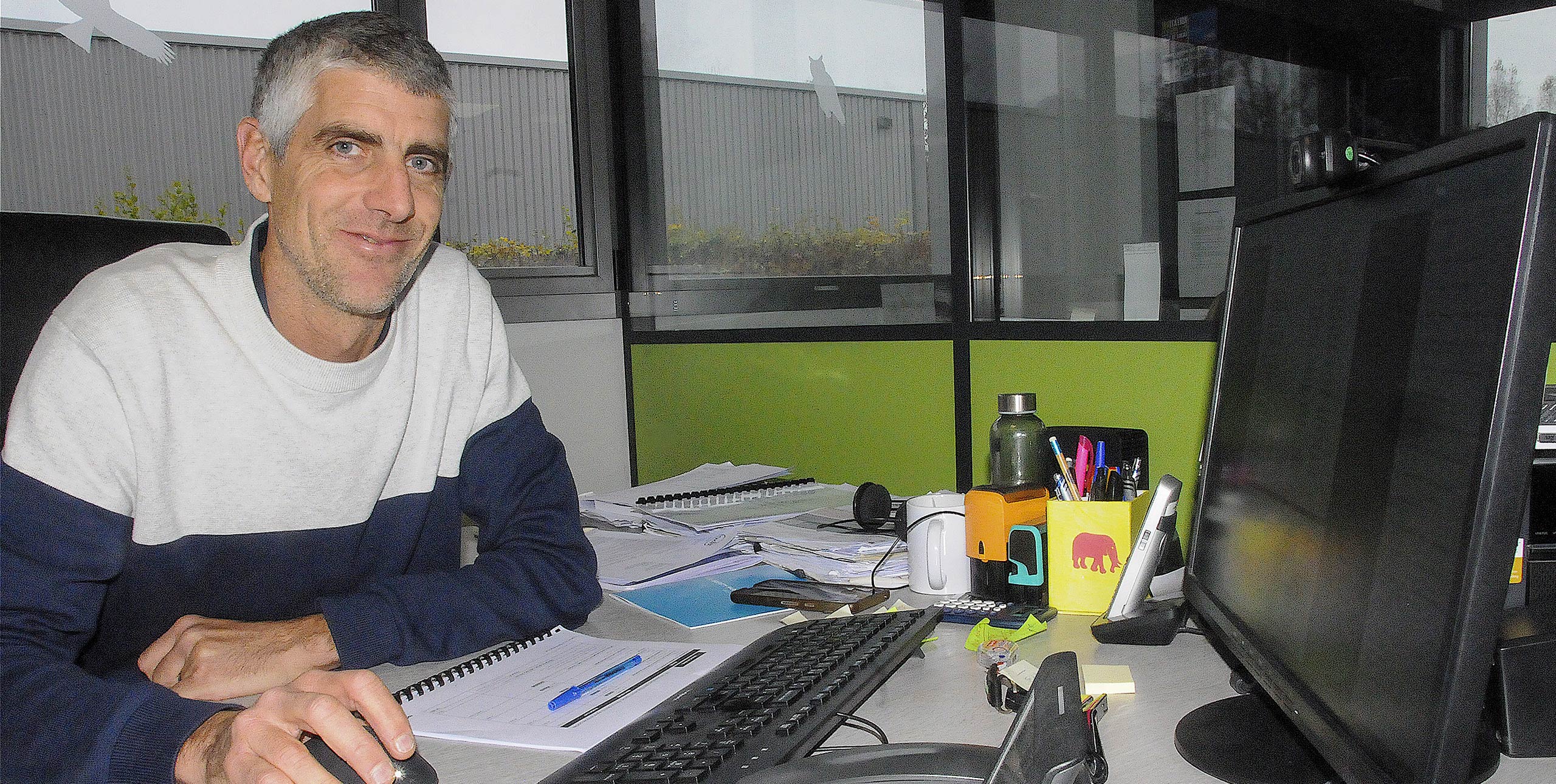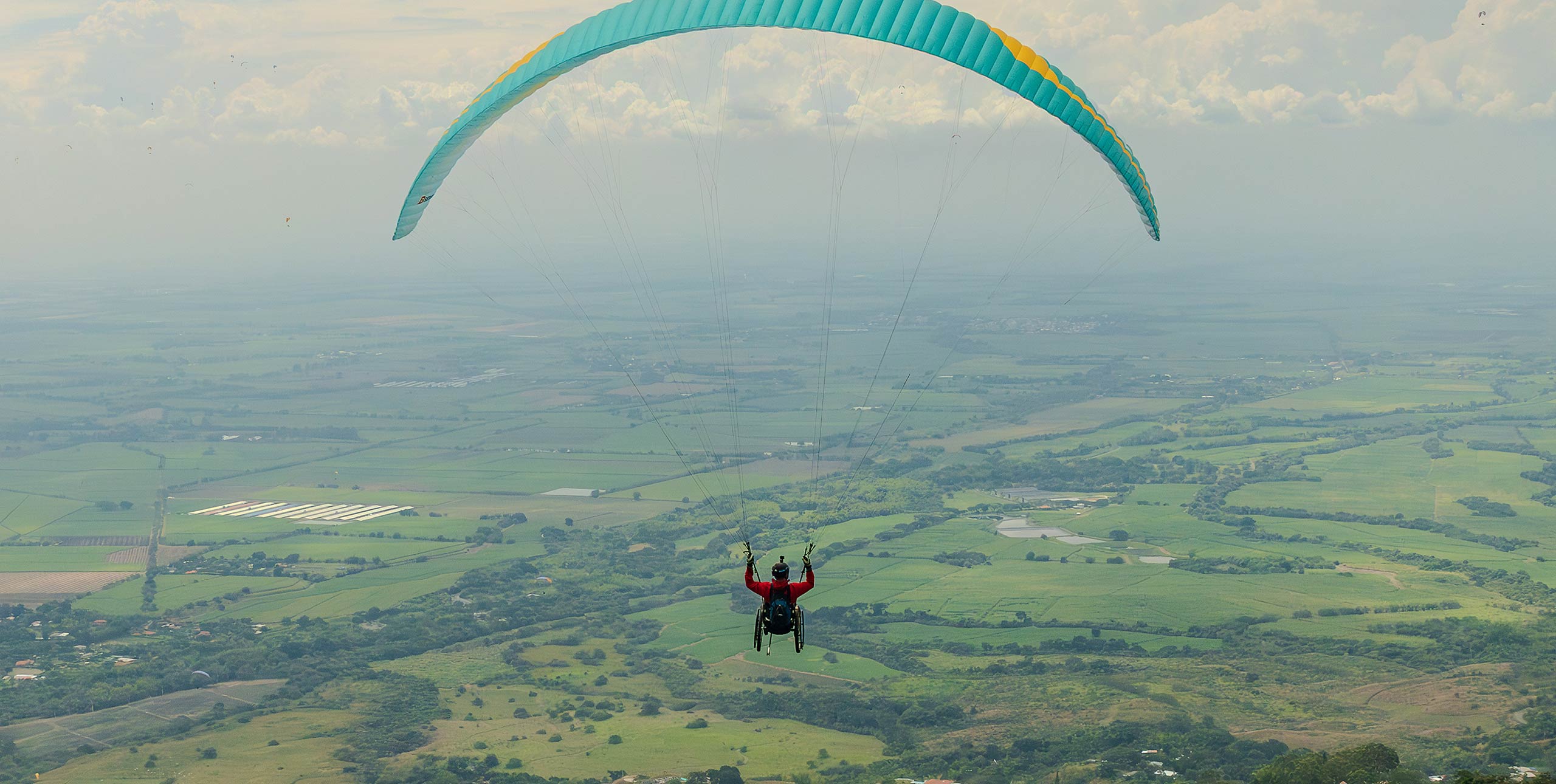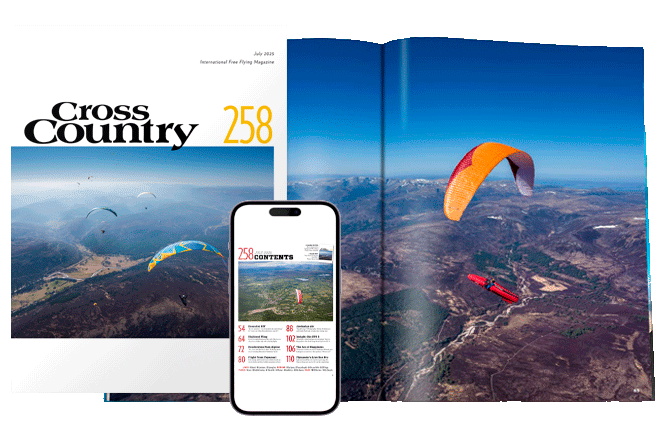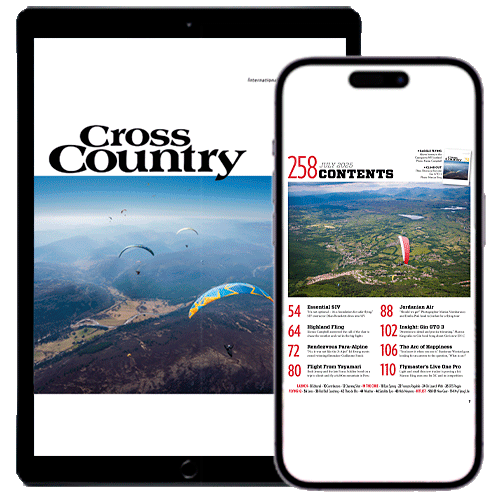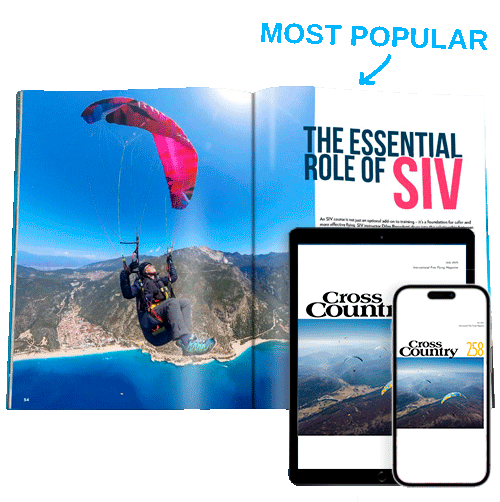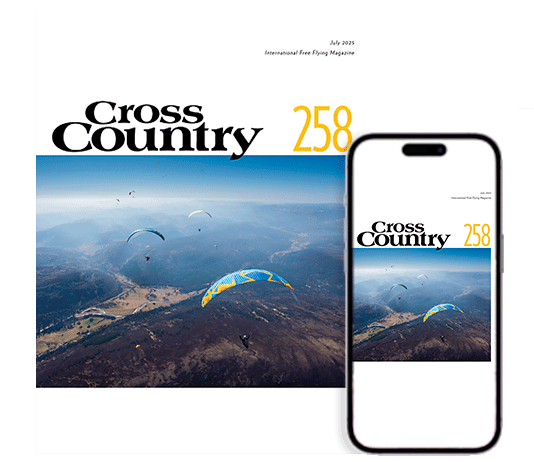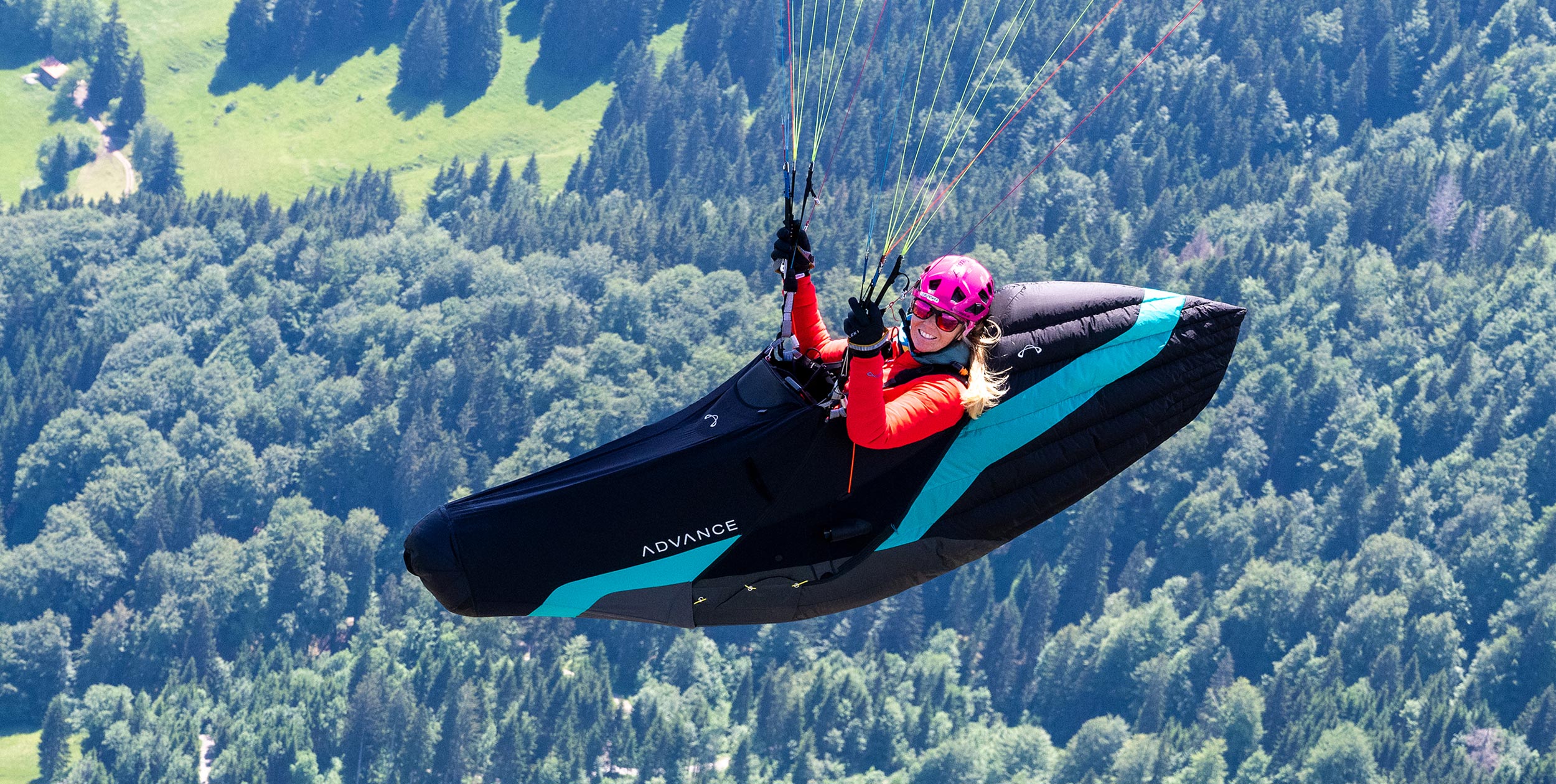
We tested Advance’s new pod harness, the Impress 4, in issue 212. The short review – it’s a work of art, says Hugh Miller.
The longer review: I thought Advance would cut off their gliders’ winglets before they released a harness with a full tail fairing – but here we have it, the beautiful new Impress 4. It’s a very worthy successor to the Impress 2+, the last full-feature competition harness Advance ever made (2008), before they took a turn to the lightweight with the Impress 3 (2011).
Do fairings matter? Yes they do. From David Dagault to Denis Cortella, all the respected designers I’ve asked have told me a long fairing adds between 0.5 to a full point of glide depending on the wing you’re flying.

Why fly a competition harness?
After years of flying lighter harnesses, I switched to comp harnesses in 2017. It was a revelation. Suddenly the two-liners I was flying calmed the hell down, and I could settle in and enjoy the ride with far less of the hyperventilating than I was used to. My most recent harness has been the Kortel Kanibal Race II, which I’ve flown since 2018. Sometimes it feels like you’re erecting a tent when putting it together but in the air, of all the harnesses I’ve ever flown, it has a beautiful, unbeatable sense of control in weightshift, and an incredible solidity on glide at speed. I love it!
The Kanibal Race II came out around the same time as Gin’s Genie Race 4, which I have yet to fly – so I can’t comment on that. I flew Woody Valley’s legendary X-Rated 7 in 2016 and 2017, which though a tad heavier than the Race II, is much simpler and easier on the ground – I’ve already been through sets of Kortel back battens after forgetting to fold it carefully. Though I’m not the brightest.
While the Woody Valley is more user-friendly, I think it’s better suited to shorter-legged pilots as its footplate geometry has just one strap running to the midpoint of either side, meaning it misses some of the support provided by the toe and heel straps of other pods.
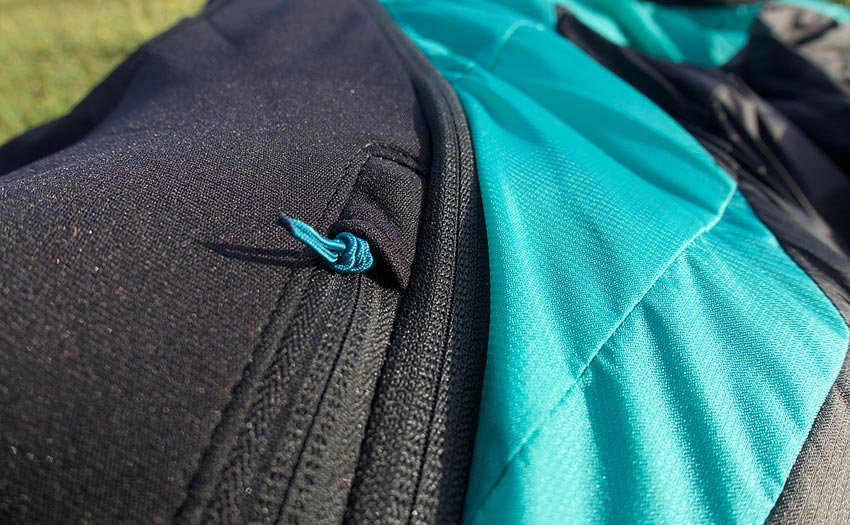
The original big beast is of course Ozone’s Exoceat. This is the kind of harness you could confidently fly through a gorse bush knowing you’d come out the other side unscathed. Strapping into one feels like putting on a diving belt and a comp harness at the same time – it’s that heavy. And after landing you go from feeling like a bird to feeling like you’re giving a ten-year-old child a piggyback. You stagger about the landing field like the force of gravity has just tripled. But those that fly it say the sacrifice in weight is more than made up for in its comfort.
All four of the above require huge volume, competition rucksacks, so it’s a bit flash of Advance to dispatch their latest harness in a 130-litre rucksack – which is smaller than many ‘standard’ bags. Inside, the harness is in a neat square shape, packed into itself like a human contortionist, unlike the sprawling masses of carbon rods and neoprene of some of its rivals.
I have a bit of an issue with every Advance bag I’ve ever owned or tried – they are very economical with space. Maybe I’m the world’s worst packer, but even using a compress bag, I usually have to fight to get my helmet and instruments in, which takes extra time, and risks squashing stuff too. I can’t help feel that Advance are slightly showing off by providing this bag: a 150-litre bag would be much more user-friendly, and still way smaller than the competition bags.
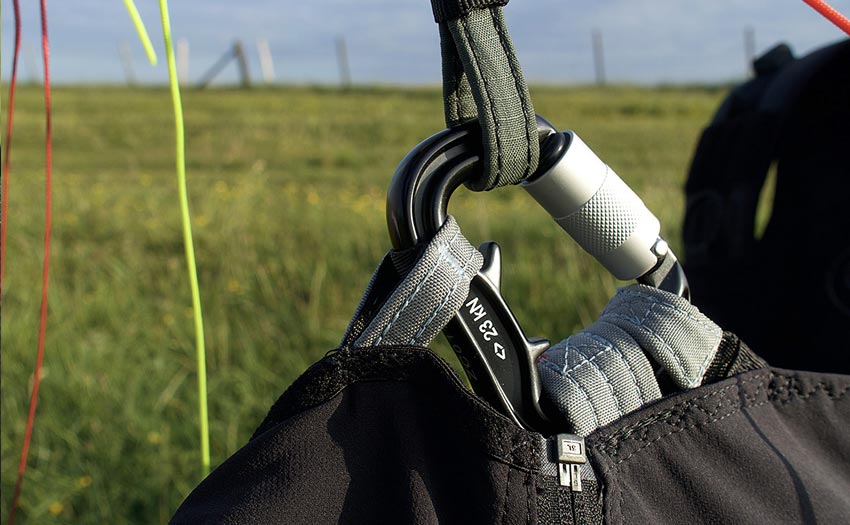
Packed with features
Back to the harness. A clear part of Advance harness designer Patrick Bieri’s brief was to create a harness that was practical and comfortable on the ground: job done. Advance say their philosophy is about simplicity and practicality, and this shines through as you unfold the harness for the first time. It’s beautiful. A marvel! The whole harness looks and feels expensive, and I felt like an excited child at Christmas discovering its features.
The reserve compartments have differently designed inner bags for left and right parachutes, and the pod securing system – similar in concept to the Lightness 3, threading a line through two rings and securing with a ball – is a proven system. The air-intake valve for the fairing is neatly secured, with no plastic showing.
There’s a very faint Advance logo on the bottom, and materials are varied throughout to reduce weight. The cockpit: again, stunning. Removable with a zip, beautifully engineered with hidden battery pockets, and an optional windscreen. The Edelrid karabiners are uniquely designed with inner fingers to raise the pod lines as high as possible, thereby improving the geometry and leg support.
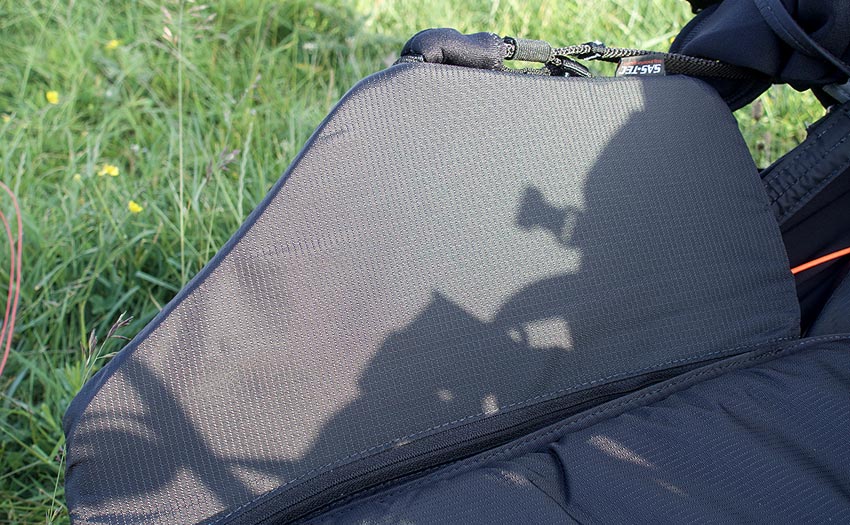
Clipping in is a similar process to the Lightness 3: firstly click in the two main straps, then thread a loop through two retainers and secure it with a ball. There’s the nice addition of a colour-coordinated clip for the neoprene pod to make the process more intuitive when you’re feeling stressed.
At 6.6kg for the medium size, it’s around 1kg lighter than its closest rival, the Kannibal Race 2, and 30% lighter than the Exoceat. On the ground, it is obviously more cumbersome than the Lightness 3, and the bottom of the carbon seatplate sits a bit lower than the Kanibal Race 2 – it’s obviously noticeable against halfway down your thighs as you walk around take-off, although the seatplate has some nice ergonomic shaping.
In the air
Once airborne, getting into the pod is easier than the Lightness 3 – the footplate is more ‘hookable’. You immediately feel supported and contained: the solidity of the lower back protection, the seat and sides form excellent ergonomics. OK it’s not quite like being in the bucket seat of a go kart, but that’s what it reminded me of. I’m quite slim, and at 182cm I am right at the top of the M: I wonder if those of the same height but a more muscular build might find it a little too tight. I would have also liked the footplate to be a centimetre more generous in height: my EU 45 size shoes only just fitted.
Advance have created the harness to be dual-use, either with or without seatboard, and Patrick Bieri says he prefers the more ‘cruiser’ style without the seatpate. However, most SIV instructors would raise an eyebrow or two if they saw you whipping it out before a manoeuvres clinic. I can’t see any good reason for removing it. Whether you’re thermalling in light lift, timing big wingovers, or trying to centralise your weight under a stalled wing, a seatplate just gives you so much more authority. So I didn’t even try.
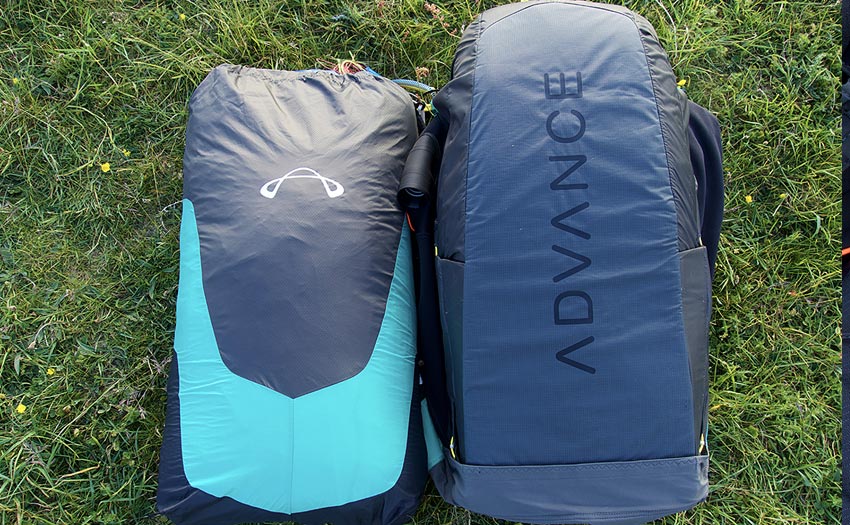
In terms of roll authority and feel, the Impress 4 reminds me a little of the X-Rated 7. It’s perhaps not as progressive as the Kanibal Race II, which just gives an outstanding level of roll authority – you can feel it as a matter of degrees as you shift your weight off and on the inside leading edge. But it’s definitely lighter and easier in feel than the Exoceat. I also prefer the Kanibal Race II’s speed system: the smaller 30mm pulleys of the Impress 4 mean the effort required to apply speed is lighter than many other harnesses.
Those who like to fly fast for long periods will consider retrofitting larger ratchet pulleys as featured on the Race II. These create more resistance when pushing bar, but reduce the effort needed to maintain speed. The speed system has two loops: many pilots, myself included, prefer three, for more graduated control while at speed. I am sure more than a few will retrofit a Bullet speedbar.
Comfort + comfort
When it comes to comfort – well, the cockpit is absolutely perfectly positioned, and doesn’t require any jiggling about after take-off. Everything else – from pee tube routing, to side pockets, to the integrated radio pocket, double-access drogue-chute container, two reserve deployment systems and so on – works perfectly. It looks like a huge amount of time and effort has gone into each particular feature. Bravo, Advance.
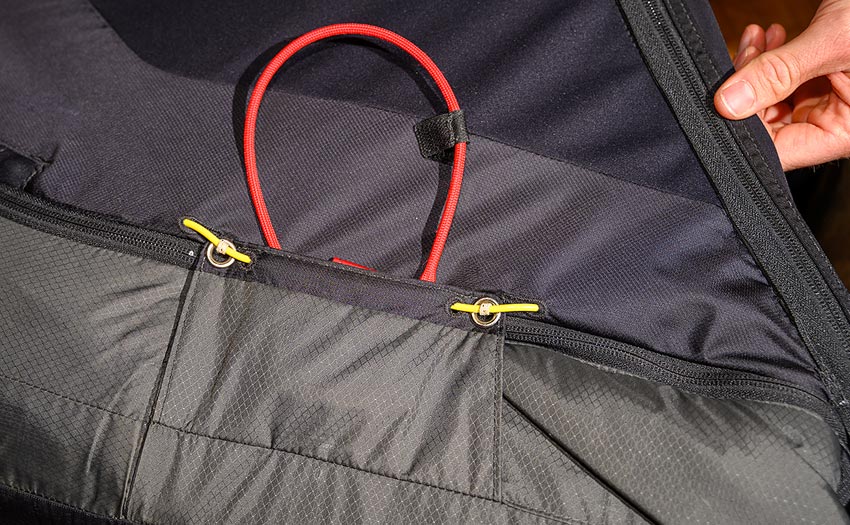
The shape is slightly banana’d. According to many designers, how the air hits the bottom of the harness is the most crucial aspect of aerodynamics, which is why it’s so important to set the harness up so the bottom line is absolutely parallel to the ground. The rear fairing doesn’t reach quite as high as the X-Rated 7 or Race II – Patrick explained that this was a conscious decision, as every pilot’s head height and helmet type is different.
After landing, as in the air, the Impress 4 is a joy. Its pack size is not far off that of a packed wing, and there’s no magic required in getting it back into that squat, compact shape. Part of the reason it works is because the pod uses much lighter materials than many competitors: it will also require more care, as it won’t tolerate messed up launches or rocky terrain half as well as others.
Nevertheless I am impressed with the level of engineering that has gone into this harness. At 6.6kg for the medium, I think carrying an extra 1-2kg is well worth it for the added comfort and aerodynamics this harness gives you over lighter kit.
It’s essentially a perfect XC/competition cross-over harness, light enough and practical enough to iron out all the hassles I’ve ever associated but put up with in competition harnesses. And I haven’t even tried out the windshield yet.
I’d better get saving!
Hugh flew the Impress 4 in the M size. He’s 181cm, and flew the harness for five hours in thermic conditions. Hugh also has 300+ hours of experience with the Exoceat, Kanibal Race II and Woody Valley X-Rated 7 harnesses
Q&A: PATRICK BIERI, HARNESS DESIGNER
What are you most proud of with this creation?
The overall concept, with the design working equally well with and without a seatboard.
Which other harnesses by other brands have really impressed you?
I’ve been impressed by different individual concepts on many harnesses, but none as a whole. I like some different thinking ideas, but most of them are not yet finished.
What is the pod material – is it the same as the Lightness 3?
Yes it is. To find a good working material for the speed bag is a big challenge, there are many criteria that need to be considered. So, with the material of the Lightness 3 we have a lot of experience. It’s the best compromise between weight, durability, elasticity and wind permeability.
You have chosen not to have any additional cross-bracing straps to improve stability when gliding at speed. Why’s that?
We have the adjustable front strap, which has a perceptible effect on stability, and this can be used during flight. The Impress 4 is so well balanced between glider feedback and stability that a more complicated system wasn’t required. This makes the flying more relaxed and the pilot can be focused on what’s essential. That’s what Advance is all about.
Tell me about the slight ‘banana’ shape along the bottom. Why is this important?
The result of all our CFD [computational fluid dynamics] calculations shows that a homogeneous, flowing outline brings the best aerodynamic results.
The fairing does not go right up behind the pilot’s helmet, like the Kanibal Race II does. Why not?
The Kanibal Race II has an extreme shape behind the helmet, which fits many pilots, and there it works well. But every pilot’s helmet and neck length is different. If the harness protrudes outside of this area, you generate more resistance, which is not the goal.
How did you work out the correct geometry to get the turn when thermalling balanced?
It comes basically from our experience and the previous harnesses. From all the steps we learned, the Impress 4 is just the logical result from all the years.
How many weeks of work went into this project? All the details are so incredibly well finished!
You do not want to know that! Actually the shape and the basic structure was finished a long time ago. But as life states: the last 20% makes 80% of the work. Details that work well are my personal aspiration. Life is too short for products that don’t work perfectly!
This review was published in Cross Country issue 213.
Subscribe here.

